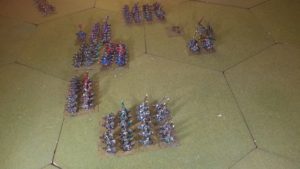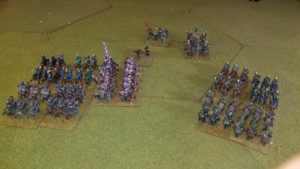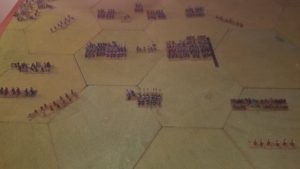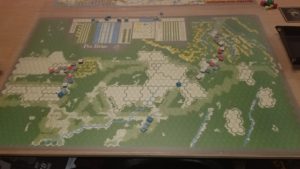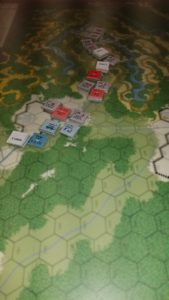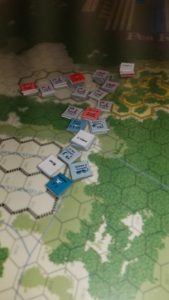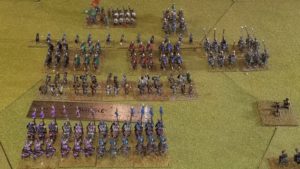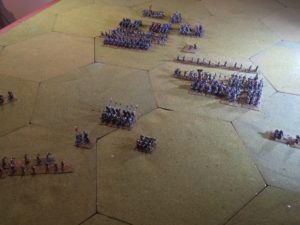Had enough of WRG 6th for the time being. Still have to finish the game today, but I’ve started reading a new set of late Renaissance rules.
Husaria was written by Ian Wilson, and published by The Pike and Shot Society in 2003. Past tense is used because Husaria is no longer in print. The exact circumstances are now fuzzy, but I snagged a copy some months ago after reading complimentary reviews, and thinking that they could work well for my 25mm Ottomans, Russians, Cossack, Poles and Transylvanians.
The rule set addresses combat in Eastern Europe from 1558 to 1699. It is specific in that regard because, according to the author’s introduction, combat in that region differed from Western Europe (and I paraphrase), in that the Military Revolution had stalled; the predominant cavalry was still lance armed and prepared to charge home, with gunpowder weapons extensively used, but unable to dominate the battlefield.
Troops are categorized as Elite, Veteran, Professional, Experienced and Raw. Fanatics can be added to the troop mix when deemed appropriate.
The turn sequence is straight-forward: Roll for who moves first, movement, combat, second side movement, simultaneous firing, response, and new orders (dispatched by messenger).
Initiative and Response Checks are used to reflect morale. Initiative is checked when a unit must do something “different”, and Response as a result of an action taken against the unit. There are many, many, many circumstances for which a check of some type is necessary. One circumstances that promises to be interesting is the Initiative Check required for the first time a unit attempts to move or fire during the game. Chaos!
Each unit has a Firing Ability Rating (FAR) as well as Close Combat Rating (CCR). These ratings are applied, along with modifiers and 2xD6 roll, with results determined by a Combat Results Table (CRT).
There are also rules to reflect unit orders, risk to the general, disorder, and terrain effects. In short, the usual suspects.
The rules set includes army lists. Each army has a core group of 6-8 units. Additional army capabilities and units are added through die rolls. This promises some variety for each army. My hope is that this variety does not lead to additional lead purchases. I’ve started lead mountain again (on that in another post), and I want it to remain a foothill.
There is one glaring omission! Each unit is assigned a CCR reading something like this: CCR 4/3/3, with dividing slashes. There is nothing in the rules that explain these slashes. I’ve read the bloody rules about ten times (only 24 pages) and cannot find a bloody explanation. Ugh! Will probably wind up sending a bloody message to the bloody Pike and Shot Society to see if someone can explain it. My guess is that each number refers to a round of close combat.
These rules seem to occupy the middle ground between Gush’s Renaissance Wargaming’s super detailed approach and the more abstracted De Bellis Renationis (DBR). Should be interesting.
